Fall 2024
NIDCR News
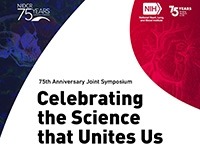
To commemorate their 75th anniversaries, NIDCR and the National Heart, Lung, and Blood Institute (NHLBI) cohosted the NHLBI and NIDCR Joint 75th Anniversary Symposium: The Science that Unites Us on May 22, 2024. The symposium showcased the institutes’ histories, notable accomplishments, and overlapping areas of research. For the symposium recording, visit the event page.

The Barmes Global Health Lecture, cohosted by the Fogarty International Center and NIDCR, returned on June 5 for the first time since the pandemic hiatus. The speaker, Ambassador John Nkengasong, Ph.D., Global AIDS Coordinator and Senior Bureau Official for Global Health Security and Diplomacy, discussed his vision for a future when HIV/AIDS strategy moves from an infectious disease crisis to disease management.

NIDCR and the American Dental Association held an online panel discussion on community water fluoridation research and its effectiveness. Watch the panel address the future directions of fluoride-related research.

To support research led by Native communities addressing overdose, substance use, and pain, NIH launched the Native Collective Research Effort to Enhance Wellness (N CREW) Program, totaling about $268 million over seven years, pending the availability of funds. NIDCR participates in the N CREW program.

NIH plans to reduce the complexity of the peer review process for most research project grants, starting with submissions due January 25, 2025. The simplified framework will focus on three central criteria: how important the research is, how rigorous and feasible the methods are, and whether the investigators and institution can carry out the project.
Training News
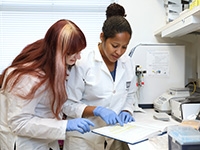
NIH plans to change the application and review criteria for fellowship applications to reduce reputational bias, beginning with submissions due January 25, 2025. The new criteria aim to identify the most promising candidates by focusing on three areas: the candidate’s preparedness and potential, their research training plan, and the sponsor’s and institution’s commitment to the candidate.

Are you a biomedical researcher with student loan debt? You may qualify for the NIH Loan Repayment Program, which repays up to $50,000 of educational debt annually in return for a commitment to engage in NIH-mission-relevant research. NIDCR is accepting applications from researchers at institutions around the country.
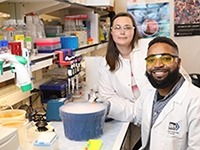
Recordings of NIDCR’s 75th Anniversary Trainee Symposium, held on October 10-11, 2023, are now available. Watch a highlight video of the virtual professional development and networking event, as well as videos from breakout sessions on how to navigate D.D.S./Ph.D. and D.M.D./Ph.D. programs, pursue careers in research, maintain work life balance, and more.
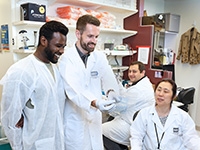
Data from 2023 show that the age at which a researcher is first supported on an NIH research project grant (R01) has remained level in recent years. The median age of investigators with a Ph.D. on their first R01 grant is 41 years old, while that of people with M.D. or M.D./Ph.D. degrees is 45.

In grant applications, using scientific promotional language, which highlights an idea’s originality and significance, is more likely to attract funding and recognition, according to a recent study in PNAS. The researchers found that grants with more promotional language were twice as likely to receive funding and were cited more often.
Science Advances
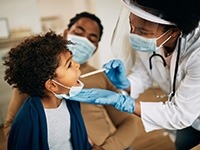
An NIDCR-funded clinical trial demonstrated that primary care pediatric clinicians could influence parents’ decisions to take their children to the dentist. Children’s dental visits increased when providers were trained to talk to parents about oral health, perform quick oral exams, and provide dental referrals during annual medical wellness checkups.
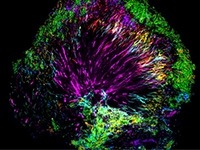
To microbes, our mouth is an entire world unto itself — the gums, tongue, and teeth are habitats as distinct as the earth’s jungles, deserts, and Arctic. From tiny bacterial “towns” to “microbial dark matter” that continues to elude scientists, more than 65 years of NIDCR research continues to reveal their impact on health.

In a video, NIDCR Senior Investigator Mark Hoon, Ph.D., and doctoral student Yizhen Zhang describe their work to understand how the brain modifies sensory signals to change our perception of pain under different circumstances. What they learn could help scientists find safer alternatives to opioids for treating pain.

NIDCR Associate Director and Senior Investigator Kelly Ten Hagen, Ph.D., and researchers at the National Institute of Environmental Health Sciences mapped mucus proteins that line the sinuses and nasal passages of mice. Their findings may shed light on how enzymes that modify mucus proteins may protect against COVID-19 and other diseases.
Grantee News
NIH/HHS News
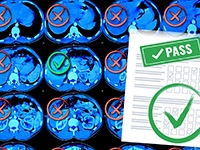
Researchers at the National Library of Medicine found that an artificial intelligence model solved medical quiz questions — designed to test health professionals’ abilities to diagnose patients — with high accuracy. However, AI models made mistakes in explaining the answers. The findings highlight the importance of evaluating AI technology before introducing it into a clinical setting.

NIH will invest about $30 million to pilot the Communities Advancing Research Equity for Health initiative, a national primary care research network that integrates clinical research with community-based primary care. The initiative aims to improve access to clinical research, particularly for people historically underrepresented in clinical research or underserved in health care.

In a proof-of-concept study, researchers at the National Cancer Institute developed an artificial intelligence tool that uses routine clinical data — such as that from a simple blood test — to predict whether someone’s cancer will respond to immunotherapy drugs. The model may help clinicians determine if immunotherapy drugs are effective for treating a patient’s cancer.
